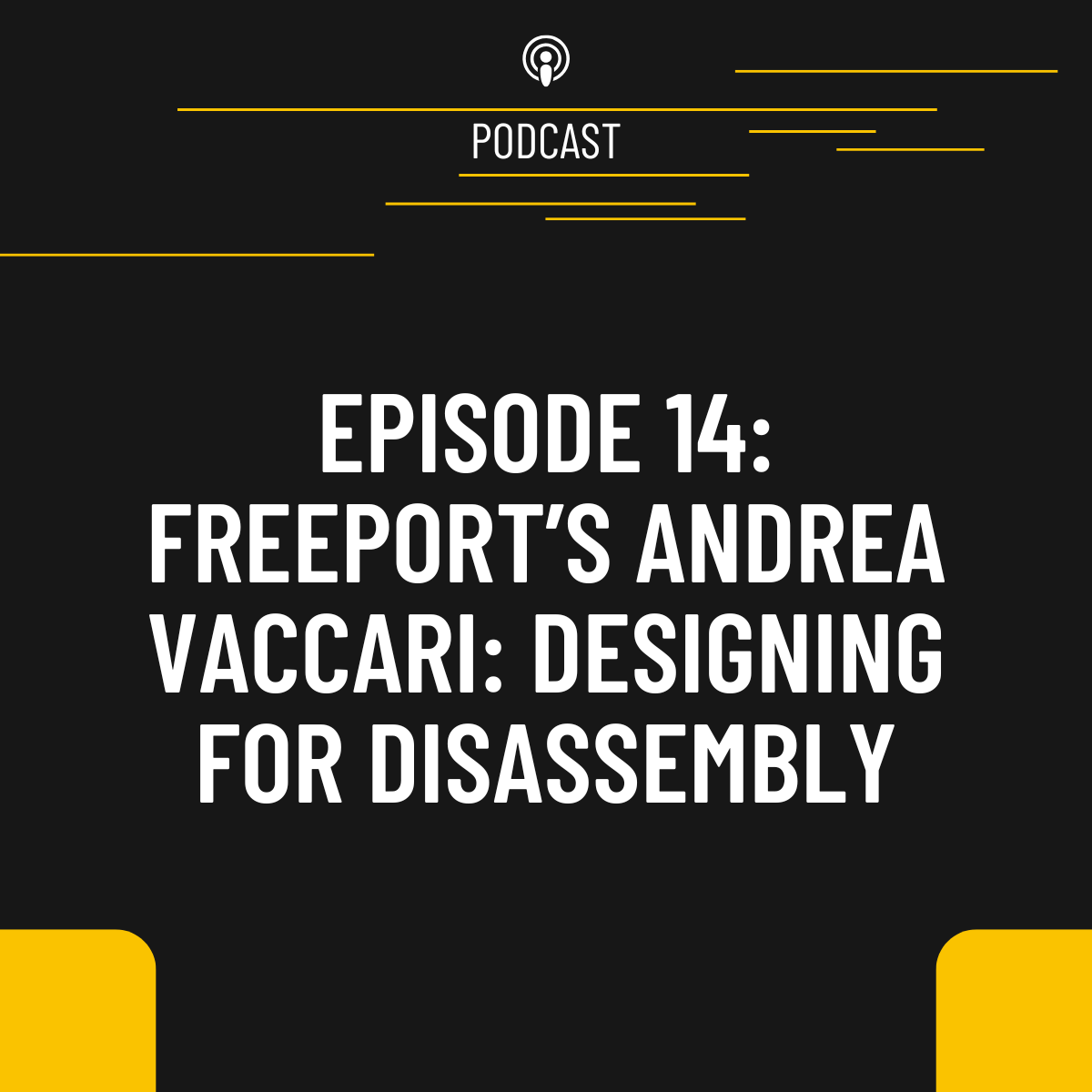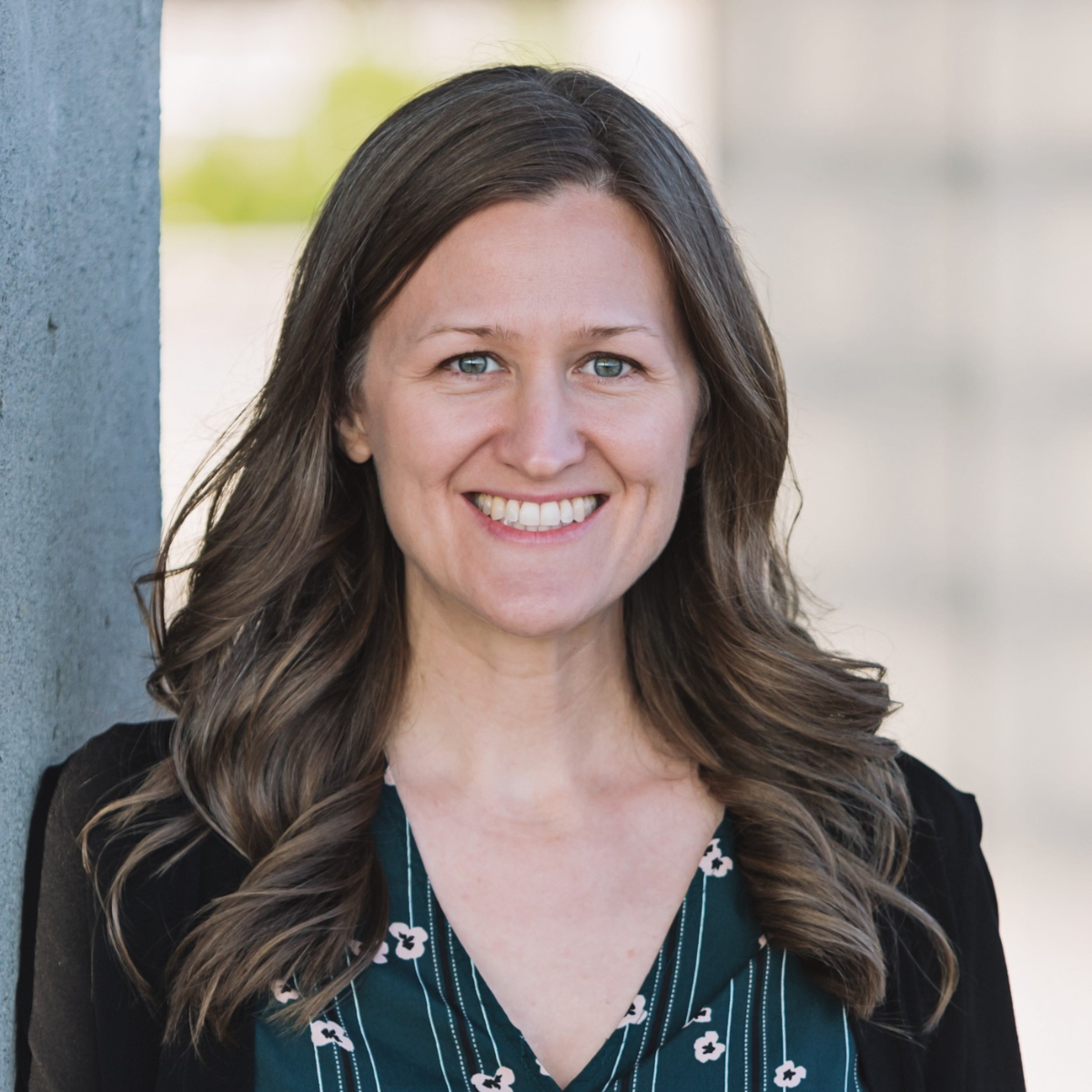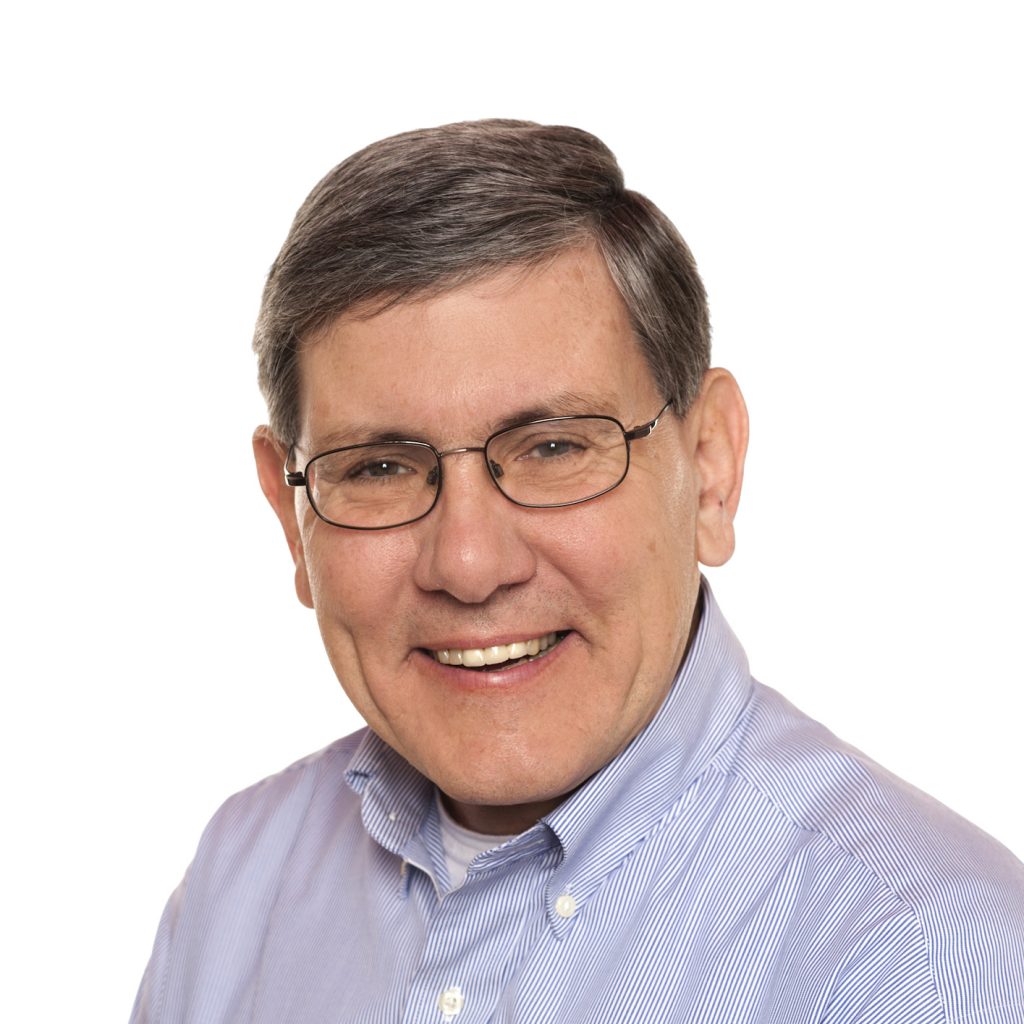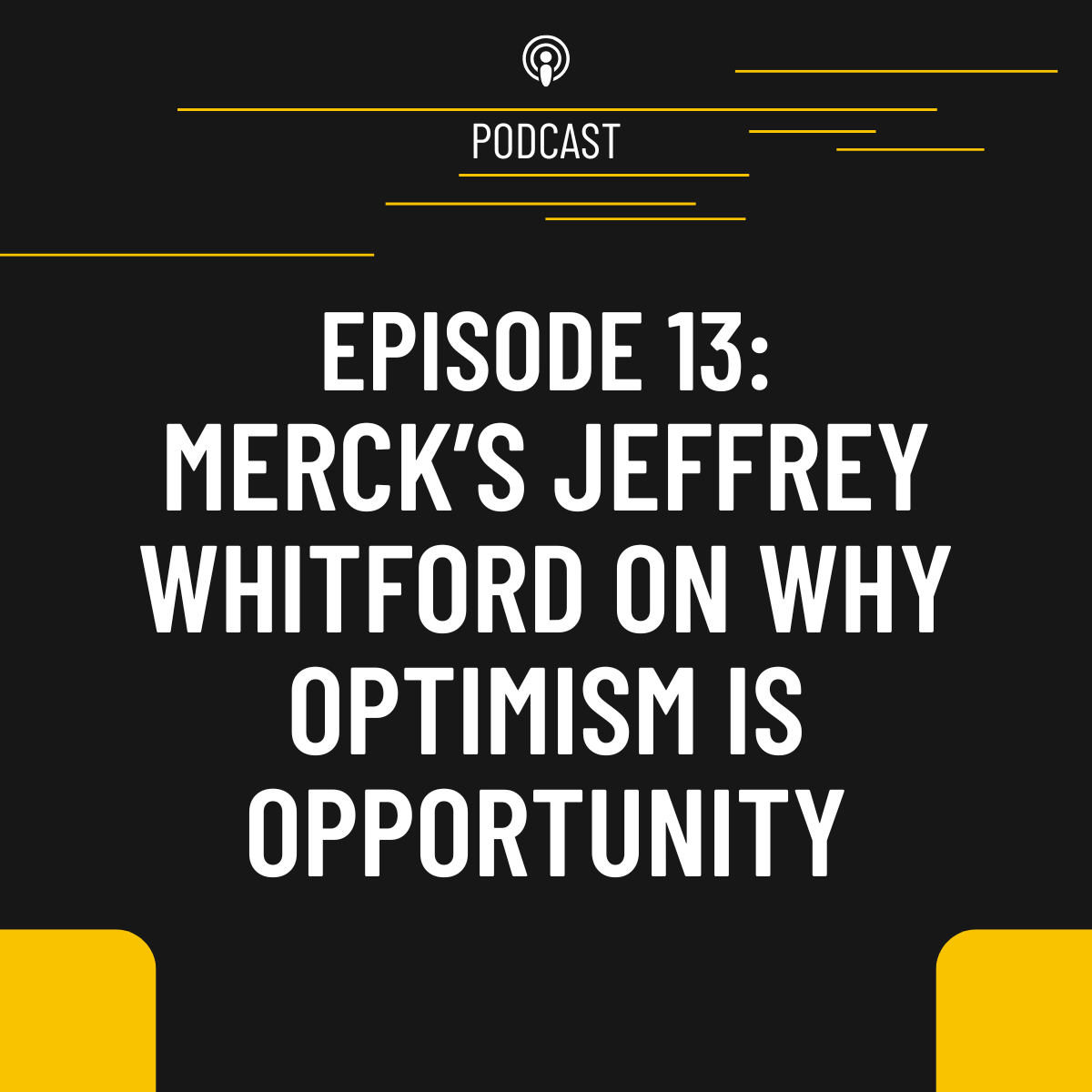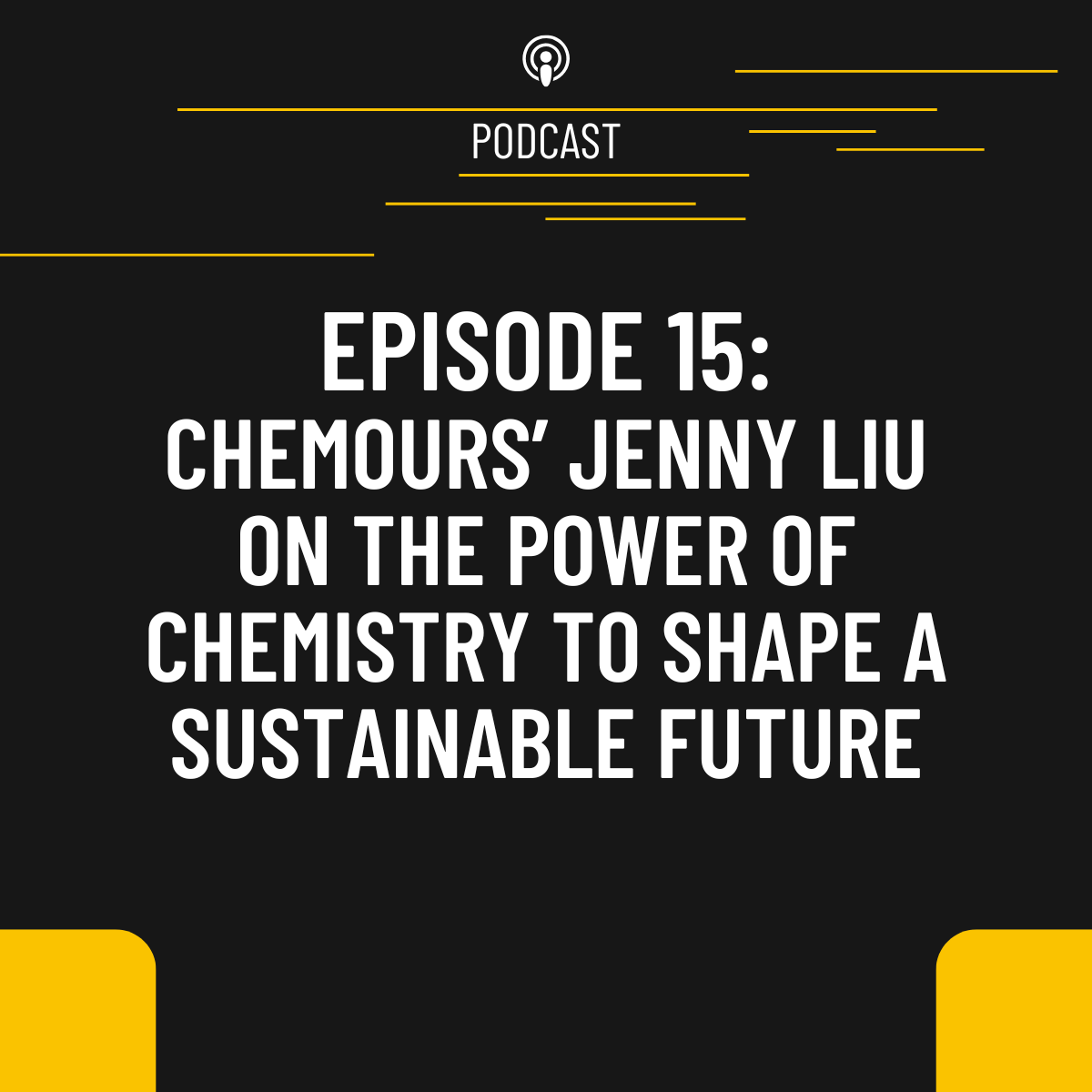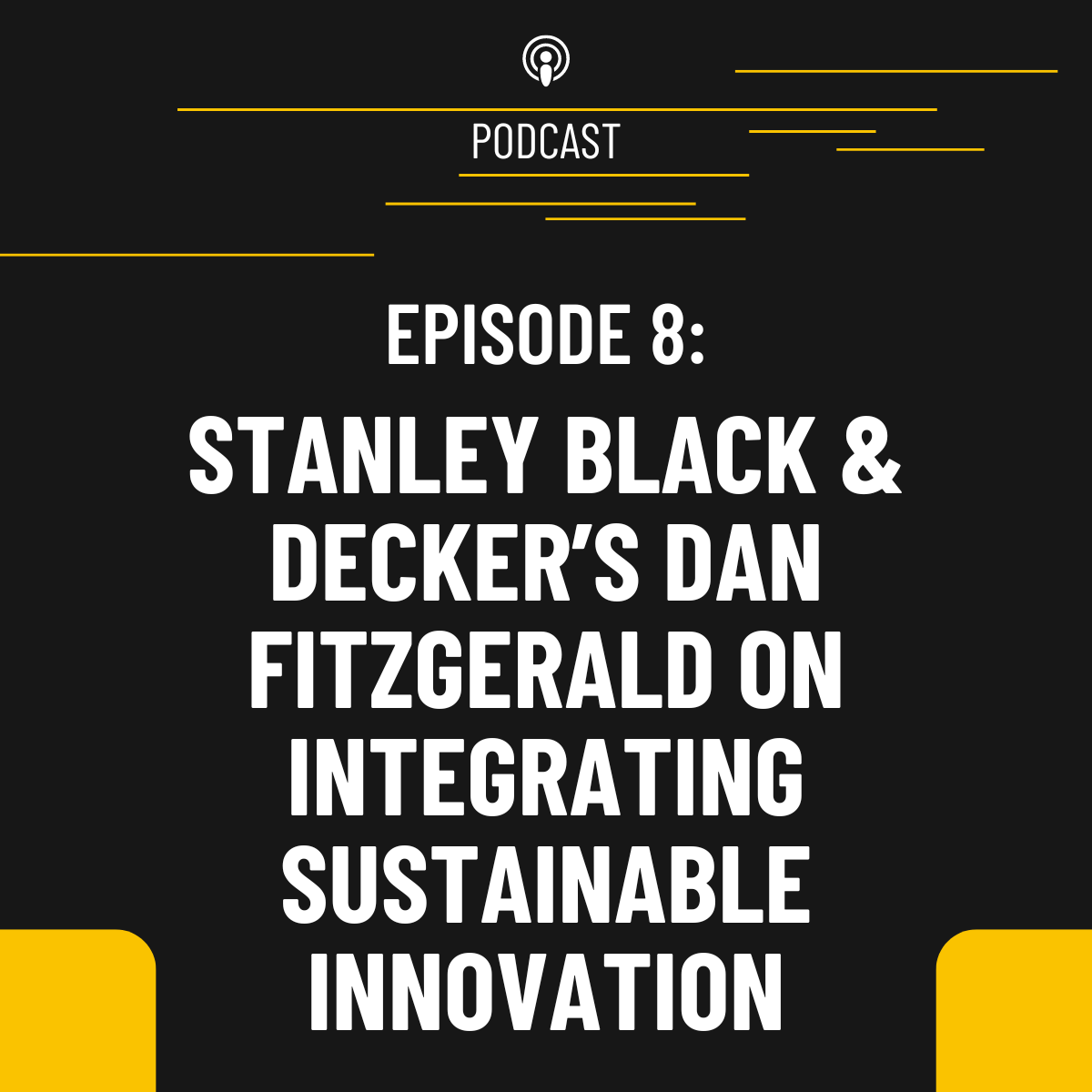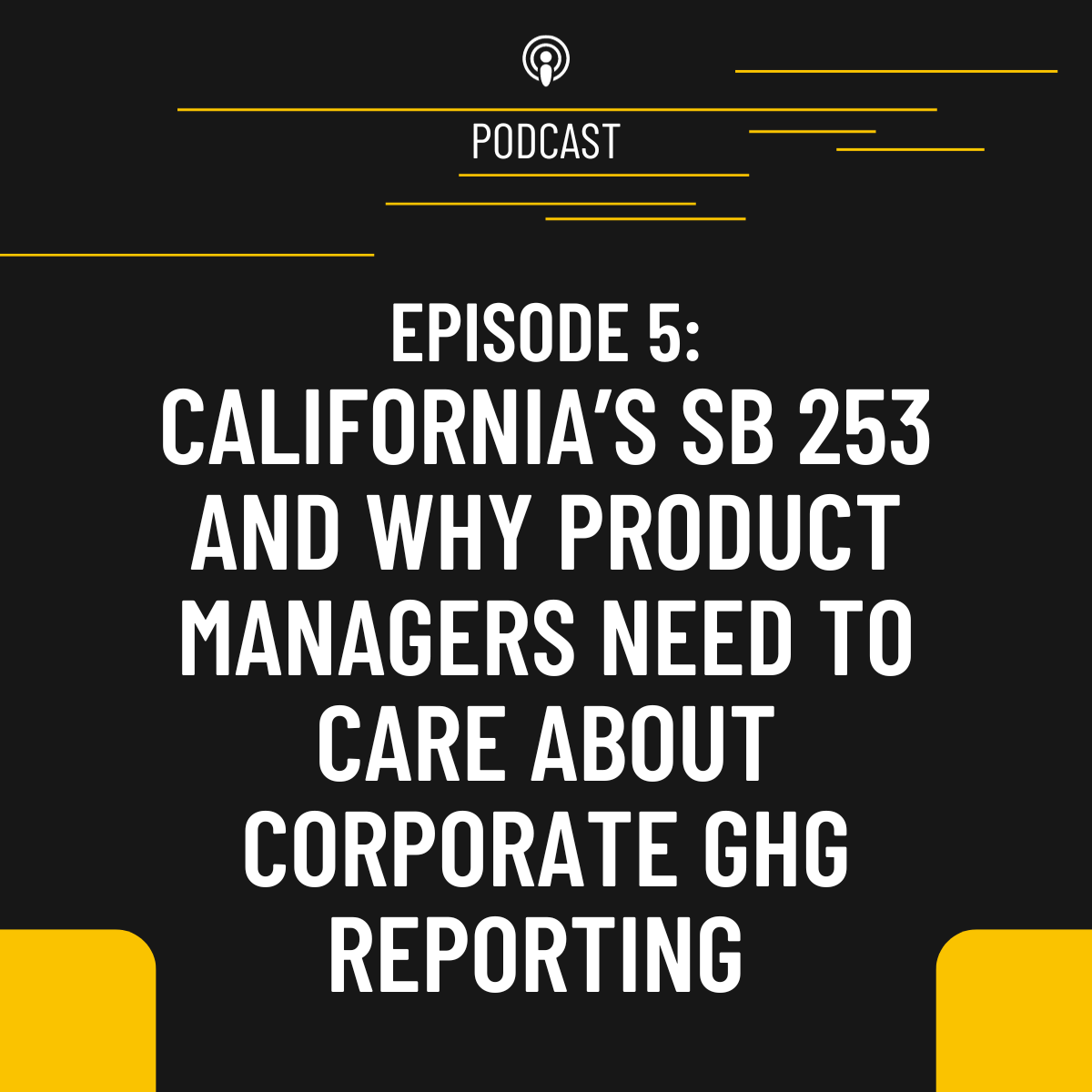Show Notes
Episode 14: Sustainable Mining & the Future of Copper
In this episode, we sit down with Andrea Vaccari from Freeport to explore the rising demand for copper and its crucial role in the clean energy transition. From electric vehicles to wind turbines, copper is everywhere—but how will we meet skyrocketing demand sustainably? We discuss challenges in mining, the shift toward responsible sourcing, and why designing for disassembly is key to a circular economy. Whether you're in product design, manufacturing, or just curious about the future of sustainable materials, this episode is packed with insights you won’t want to miss!
In this Episode
Shelley: One of the things I think is interesting and I think would be great to have you introduce to the listeners is the role of copper in the clean energy transition, because I don't think everyone appreciates how much metal is going to be needed to make that work. And it's also great context for those listening who might use copper or metal in their products. [00:44]
Andrea: That's right. Copper and molybdenum especially are really, really critical for the energy transition. When you think about all of our low carbon or zero carbon forms of energy. So we think about solar, when we think about wind, when we think about hydrothermal, even just thinking about LNG and how LNG actually provides power to a grid, copper's in all of that. In wind turbines, offshore wind turbines need lots of copper. I think actually a few tons of copper per wind turbine to be able to not only power the wind turbine, but then the deep sea cables that connect them and that connect them back to the grid. We think about solar power and it’s not just a solar cell; there are batteries involved. And how do you tie a battery storage device to infrastructure and to the Internet? That's copper. [01:02]
The simplest things, like developing nations, as they come along in the energy transition in a just way and we improve their grids, those are full of copper. Transformers, cabling in houses, as we improve green buildings, it's just everywhere. It really is. And then molybdenum is used in stainless steel and it's used in a number of other applications, but stainless steel especially and we know how much that's used in building and construction, bridges, all kinds of different applications for the energy transition. [02:07]
Shelley: Is it possible to give us any numbers for that, like forecasting 5, 10, 30 years, like how much is needed? [02:36]
Andrea: Right now the total refined copper market annually is in between 25 to 30 million tons a year and we expect that to double by 2050. Now you hear all kinds of different things. So, you hear people talk about doubling, tripling, quadrupling. I don't know, the way that I look at it is whatever number we come up with, we're always going to have the wrong number. But I think there's general consensus that it is at least twice. Just take like an electric car. So, if you take an internal combustion engine vehicle and then you take a fully battery electric car like a Tesla or a Mercedes, you're talking about three to four times the amount of copper per vehicle. And then you've got charging stations which are full of copper. [02:44]
Neil:. Some of these models don't even consider the development that you see in countries which are not electrified yet. So, India for the largest part isn't really electrified and in the next 10 years we will see a huge part of that also taking shape. So, I think you're right. Some of the numbers that I have in my mind, more short term where we'll be needing 50% more copper than what we have right now in the next 10 years. And that's a crazy amount of growth that's needed. It's not 30 years from now or 25 years from now, it's, it's 10 years and to increase by 50% is crazy. [03:36]
Andrea: It's massive. I think between the 1980s until 2020 ish, I think we basically almost doubled the refined market and then it's set to double again. That requires a lot of growth. It requires both primary and secondary. What are you going to do? Pull the copper out of the building so you can recycle it? Copper has such a long life and so you have a limited amount that you can make up from recycling. It's a huge opportunity for the mining industry. But we don't have two times as much water, we don't have two times as much natural resources to make each ton of copper. So, Freeport's view is we have to do that responsibly. We're accelerating the future responsibly, but that's going to require a huge amount of innovation by all primary producers. [04:14]
Neil: What are the biggest barriers to us getting there? Let's take a short-term perspective. I think long term we can create lots of fantasies, but I have engineers and we're trying to help them build better products. They're not going to build them without copper and assuming that they'll need 50% more in the next 10 years than what they have access to right now, what are the big barriers to producing that much more and where will we get it from in current planning? [05:04]
Andrea: I'll start with where it will come from. One of the big dynamics that we've seen in the last few years is that the amount of copper coming from developing nations is higher; that sort of shift is happening. Chile remains the largest copper producer in the world. It's around 30% of the world's copper. Peru used to be number two. Now the DRC (Democratic Republic of Congo) there's been a ton of investment and there's lots of relatively high-grade copper there. Multiple mines have come online there in the last 10, 15 years. We had one of them, which we sold called Tenke Fungurume to a Chinese company, and so there's a huge amount of investment that's happened there. Peru has had some unrest in the last few years politically so it's kind of fallen behind a little bit in investment. But we have a have a huge mine in Peru called Cerro Verde, which is crucial for the Peruvian economy and the second largest city there, Arequipa. But what we see is those developing nations starting to have mines developed because in developed nations we have great difficulty with permitting. In can take in the United States and other developed nations a huge amount of time to go from the initial drill holes to a productive mine. It can take 20, 25 years. It's not just a permitting issue, but it certainly is a significant issue. It's an issue in Chile as well. The Chilean government is working on permitting reforms. The US government is trying to figure out how to do that better as well. But then also free prior and informed consent of indigenous peoples is an issue as well. So ensuring that you're working really, really closely with local communities and indigenous peoples from the very beginning of drilling, even just exploration stage, which is different than it used to be. So learning how to do that, learning how to do that well, and it's not easy, right? I mean the copper price basically needs to be above $4 a pound for companies like ours - we're a large Fortune 500 mining company - for companies like ours to invest in a 20-to-30-year time frame. [05:32]
Andrea: That's like 20 years before you start making any money and boards of directors are highly critical of where we actually put our resources. So what's happened now? Like I said you have this shift that's happening: DRC used to be like 5% of the world's copper and now it's increasing and increasing and increasing. And there's some geopolitical power shifts happening. You've got prices that need to remain around $4 for us to stick in there for 20, 25 years, and then now you have the expectation of free prior and informed consent for any large project, which also takes a lot of work and a lot of time. [07:43]
Shelley: I was going to ask, how does sustainability fit into this? I know you've had some involvement in the Copper Mark, maybe let us know about that and what sustainable copper and metals looks like these days. [08:22]
Andrea: Like I was saying before, we don't have two times the water, we don't have two times the energy, we don't have two times the resources or people even to work at these mines to develop all that extra volume. And what we look at is really being a responsible producer and the whole copper industry. This is a great opportunity but it's also a huge challenge for us all. When I was working for the International Copper Association, I was there from 2016 to 2019, we created something called The Copper mark. The Copper Mark is essentially a responsible production validation process. It's 33 criteria that range everything from corruption and bribery to business integrity, compliance, human rights, indigenous peoples, as I was speaking before, environmental management, tailings management, everything you could think of when you think of what are the main, quote unquote, potential sustainability impacts of a mine. Essentially that whole framework or those 33 criteria have to be validated by a third party, basically audited, just to use plain language, it has to be audited every three years by a third party and every four or five years the criteria get tougher. For example, we just had our Cerro Verde mine, which is one of the world's largest copper mines in Arequipa, Peru. I was there last week, we just had it audited last week. The audit's actually more like a six-month process, but we had the on-site visit and one of the key pieces of it is that the auditors actually independently interview employees, third parties, external stakeholders, contractors with the offer of anonymity to basically provide feedback to the auditors on how the mine's performing across those criteria. For us we see it as, I don't want to use a hokey word, but it's kind of the promise. So we say, every single one of our sites globally is going to be assured against the Copper Mark and now the molybdenum mark and there's also now a zinc mark and a nickel mark, and we're going to keep that going over time. And that's our commitment to customers, stakeholders, local communities that we're going to keep trying to produce responsibly and we're going to keep finding new ways to produce more responsibly as the bar gets higher and higher and higher, if you will. [08:32]
Neil: What is the kind of adoption for the Copper Mark? Because I could imagine, you just told us that the dynamic is going to shift where production will need to move to other places than what was done before. And these kinds of criteria, these kinds of certifications become even more important in places that we have not operated in before. Imagine I'm designing the next phone and of course we're buying copper directly, indirectly for our designs and we'd be looking for this mark. What is the percentage of copper that we can buy that has this mark versus not and is this really picking up? Is this something that we could say is the future of sustainable copper? [10:55]
Andrea: That's a great question. The Copper Mark spun off and became an independent organization in 2019 and now has a multi stakeholder board, et cetera. We launched it in the March of COVID, and now have almost 40% of the world's mined copper is now Copper Mark. Newmont just had one of their mines in Australia certified yesterday. There are mines in the DRC. The mine that we used to own, Tenke Fungurume, is now part of the certification program. Glencore signed up their two mines in DRC. The whole idea of Copper Mark was to have it be a continual improvement framework so you could come in and you don't have to be perfect, you have to at least partially meets across the 33 criteria to achieve it. And then within 24 months you have to be fully meets. So you have two years to close those gaps. And the idea of that was that it's not about perfection, it's about progress. We want to raise all boats. The whole industry will do better if the whole industry is doing better and that was really the premise of the Copper Mark from the start. [11:32]
Neil: So for engineers, people who are looking at purchasing and buyers or thinking of purchasing products that are made of copper with this mark, directly or indirectly, what are the other things that you would want to tell them, keeping in mind when they're designing products, potentially about how they use copper, what they think about in terms of how products should be recyclable or disassembleable? What are the things that engineers should keep in mind when putting copper into their products? Which I'm assuming almost everyone has to eventually do that, right? [12:48]
Andrea: Yeah, I would say design for disassembly is probably the most crucial piece. Why? Because the challenge is when you mix metals with plastics, you have to get rid of the plastics before you can make that metal again. Perfect example, we have this new addition to our Atlantic Copper smelter in Huelva, Spain, where we've added a new, basically what we would call like a secondary smelter, so where we take end of life cables. Okay, so we take power cables from vehicles, from various applications, various different products, and we have to burn off the plastic. There's no other way to get the plastic off the cable. And that takes energy. How do we design these cables? When you think about a copper cable, it's got like a sheath around it and you have the wires in the middle and surround them in rubber or plastic. And so that's just a challenge. So thinking about the disassembly, are there new innovations that we can come up with that don't require them to be burned off, that enable physical separation as opposed to chemical separation, where you're basically just burning them. That's something really to be thinking about. But I think the best thing we can do is design products to last a long time. And the reason I say that is because copper doesn't degrade over time. You still have copper in some buildings that were built 200, 300 years ago, whether it's just little bits of copper for turning on lights from 150 years ago, whether it's old cables, whatever it is, copper can last in a building for its life. So that's something that I think about a lot. If we think about the biggest uses of copper, they really are to electrify our homes, to electrify our grid, and then also, of course, to provide power, to generate power. So when I think about that, I think about longevity. When we look at cell phones, or we look at cars, and if we're going to be putting four times as much copper into an electric vehicle, what are we doing to make sure we can get it back? Because it's infinitely recyclable. So design for disassembly, especially for the short life products like phones. [13:18]
Neil: There are regulations that actually force companies to think of this: to repair. I think there's been disassembly regulations in the automotive space for now almost 15 years. I think this is where. But I think with Esper, there's a regulatory aspect that I think has not been as prevalent as it was before. With ESPR, which is the European Sustainable Product Regulation, the digital Product passport, so to speak, and one of those criteria that come in there is about disassembly, is about end of life and how to treat these products at the end of life. I think there is a mindfulness that comes in. And if you think of large companies, and if you're an engineer working for a billion-dollar company, you don't think I'm only going to make this product and sell it in the US or in India or in China. [15:37]
Andrea: No, you design for the world. [16:30]
Neil: And I think these are things that must influence design decisions early on. How can we make products where we can extract these precious materials much easier than we do today? [16:32]
Andrea: When we think about innovations and how much has changed in our lifetimes, we're certainly not going to be designing the same way in 10, 15 years that we are today as we sort of cruise into the energy transition. And I think a lot of that innovation is going to come from European countries because of those regulations that really force that forethought. And we've seen it impact vehicle design right from the End-of-Life Vehicle Directive. [16:44]
Andrea: When I first started working for Jim and Five Winds International in 1999 that was the work we were doing - was design for recyclability, design for disassembly for automotive vehicles. So when we think about things like cell phones and we think about the urban mine. What is that? It's this concept of how do you go to where these discarded cell phones are or discarded waste is and mine it and get it back. We know that so many of these do not go back, they end up in the landfill because people don't have easy ways to dispose of them or don't seek those ways out. So I think that's a key question, how are we going to safely urban mine to get materials back? But I also think about innovation. If you think about the challenge that we're faced with in mining, that permitting is getting harder, that gaining agreements is difficult, new mines are just a huge challenge, right? What we're trying to figure out is how do we get more of what we already have. So how do we take existing mines and go to old stockpiles which used to be below cutoff grade and find ways to get that copper out? And I think about those exact same things when I think about the urban mine and when I think about products in general, like how do we change our mindset about whether something is done and how to get it in life and keep it in life from the mine all the way to the end of life disassembler. We need to be thinking about innovation and how we just do things differently. And so at Freeport we're doing a huge piece of work on that and really for us, trying to figure out how to no longer have to concentrate and smelt. So there's a, there's a whole route of mining called SX-EW which is essentially solvent extraction and electrowinning versus traditional fire refining where you think of a big copper smelter. We're trying to figure out how to take ores that used to only be able to go through that process. How can we not do that? Which would have a massive impact from a carbon perspective. And so when I think about the product designer, I think about what is the impossible. If you had a conversation 10 years ago with any miner, they would say to you, oh, there's no way that you could ever take a sulfide bearing copper ore and not smelt it. But now we're all putting millions of dollars towards figuring that out and so I think the same thing about product design, like how do we just challenge ourselves and do things differently? Well, we have to cover the cables in rubber. Do we? That sounds very easy to say that, but I think it's what we have to do. [17:23]
Jim: It's easier said than done, obviously. But I wanted to follow up on the procurement from the government. We talked about business to business and the products and governments buy products. But have you seen a major pull from the governments for the Copper Mark going forward? Do you see that entering into the picture at all? [20:11]
Andrea: We do. We see that growing significantly. In fact, Copper Mark and the Mining Association of Canada and their program towards sustainable mining are working on basically a process of coming together in a single standard along with ICMM (International Council on Mining and Metals) and World Gold Council. And what we've seen is that governments around the world, mining governments around the world, want to adopt these frameworks and they really want to bring them in. And whether they make some part of regulation or legislation or not, or they just encourage it or will only allow certain incentives for mines that are certified. We do certainly see that the challenges still exist though for new mines. But I think we're starting to see that the Inflation Reduction Act has certainly led to a lot of conversations. The Minerals Security Partnership in the US is really trying to bring together Europe. [20:35]
Neil: I think very often we underestimate the value of creating transparency or forcing transparency in supply chains. You don't want to find bad stuff in these supply chains and while you may not need to regulate and say you need to follow this standard; you will need to tell us that you don't. I used to tell our team, and we tell this to our customers as well, it's good you create your reports this year, next year, as the regulation stipulates it and then you do the year after that and then you'll do it the year after that. And then people will ask, not have you done your report or not, but why hasn't it changed and why isn't it improved? And I think that's this thing that in the next three to five years, as you said, we will not just change the products that we make, we will have to change how we make them and the kind of choices that we make in the materials that we put into them. [21:27]
Andrea: Yep. There's no doubt and I think the battery passport is going to be a really interesting, to see how that evolves. One of the things about commodities is that the way in which they're sold can lead to a lot of opacity in the market. And there's this famous story, I don't know if it's a mythology, true or false, in our industry, that a very large European automotive OEM tried to trace their copper or at least get some transparency to their copper. This is about four or five years ago, and they studied it for 10 months and gave up. [22:23]
Neil: Yes, that's not fiction, that's true. [22:58]
Andrea: So it's also incumbent upon us and really the idea with the Copper Mark was, right now we certify the sites, we have a chain of custody certification that's just sort of burgeoning. So there is a chain of custody certification. Freeport has that now with two of our customers where we send them data on a routine basis with their deliveries - we send chain of custody data for cathodes. And now those semi fabricators are becoming validated or certified by the Copper Mark. Right. So the idea is that eventually the OEM or let's say the utility or whoever should be able to say, okay, X percent of the metals in my [product] are responsibly produced. But the challenge is we have all these OEMs that want all of these things, right? So we have Apple, we have Microsoft, we have Google, we have Daimler, we have BMW, we have Ford, we have all of these OEMs wanting things. But the middle of the chain where even less of the money is made, not very much money is made, is not passing through those demands. And part of the reason for that is that this side, the OEM side, doesn't want to pay any more money for it if it's responsibly produced. And so that's something I worry about a little bit. And I don't know what role the product designer can play in that other than just demanding more responsibly produced materials. But I will say that the automotive sector in particular is infamous for not paying any more for something that is produced better. Jim, we worked on that for for years and years at Five Winds. Right now we're trying to push it through the middle, and the middle's kind of like, this is a lot of work and a lot of money and then the OEMs are coming directly to us and they're just skipping the middle of the chain. And so somehow we have to fix this piece and that's where the opacity will get solved because if you can trace it obviously or create a digital passport or a token or whatever it is, that information can get through. And I think that's something where product designers can just keep demanding it and demanding it and the companies that produce products can keep demanding it, we'll get there eventually. But right now, for us, that middle of the chain needs work. [23:02]
Jim: I want to follow up with the competition among the mining industry or the metals industry. With all the demand that's there for copper, 50% growth that we are talking about. Are the companies collaborating? Because there's so much copper that's being required that you're really going to have to solve some of these problems together as opposed to working in isolation. Could you just talk a little bit about that, that dynamic? Is that a positive thing, is it a negative? And where might it be positive? [25:40]
Andrea: Yeah, it is the era of collaboration. We are involved in so many collaborations. I'll give you a couple. I mean Copper Mark is a great example. We have a number of climate related collaborations where we're trying to figure out how we electrify the mine. And so there's a number of those collaborations happening. There are hydrogen hubs, we're trying to figure out how to use hydrogen in our smelters, we're trying to figure out how to use hydrogen in our mines. I would say tailings is a huge area trying to solve or crack the nut of dry stack tailings. You can do dry stack tailing or filtered tails. Which I won't get into it. It's very technical. But you can't do it at scale yet. And the big miners need to be able to do it at scale so figuring out those precompetitive technologies is together is crucial. Look at ICMM, the International Council for Mining and Metals which we were a founder of, that is what we do there. We think about things like dpm, diesel particulate matter in underground mines. There's been huge leaps and bounds on that by working together and then working with the supply chain. Our own Supply chain, working with Caterpillar, Epiroc, Komatsu, any of those big producers that supply us with part, working on scope three reductions. I mean all of that has to be done through collaborations because we don't all of a sudden magically have more money. I think precompetitive technology discovery and then working together with our supply chains to help them innovate and deliver more sustainable products to us is crucial. For us we really see collaboration as something that is the only way that we're going to succeed successfully. Ultimately, right now, I would say the energy transition for us is the era of collaboration, precompetitive collaboration. [26:17]
Jim: Dealing with some of the tailings issue, that's really a specific kind of a problem and there are going to be people located all over. So the collaboration is going to be fairly complex and not necessarily these normal meetings like we used to have and you could go face to face for two days kind of thing. How do you really make collaboration work? I mean I'm fully supportive. I mean in terms of what I've done in my career, collaboration is critical but when you think about the mining and the dilemma, how do you get that collaboration done in a way where you can really accomplish something? [28:16]
Andrea: Well, and you can't do everything right. You know there's hundreds of collaboration forums for the energy transition and mining. There's hundreds of collaboration forums for electrifying mines and you really have to pick the ones that you feel are going to make the biggest difference, which is what we've done. But you know, when we think about tailings, that's an interesting one. They just had a forum down in Peru and you know you have GISTM, the global international standard for tailings management that was developed within the ICMM and external stakeholders just coming together, talking about the implementation, talking about new technologies, sharing ideas and thoughts can spark a lot of things to happen within companies. And so those are not huge commitments. Right. It's a huge commitment to implement the GISTM but it's not a huge commitment to get together virtually and have these good discussions and then a few times a year get face to face. Where the rubber really hits the road or maybe the copper is smelted. I don't know if there's a new way of saying that is ultimately where you get multiple funding sources together to focus on a totally new technology. And I think that's where we're looking at new tailings technologies, where we're looking at mine electrification and really honestly leaching. So looking at these new ways to avoid having to concentrate and smelt sulfide bearing ores, that'll benefit the whole industry. And we do those in forums and some work, some don't. But being able to do this work virtually now, Covid really helped with that. You know, mining is a very conservative industry. Like you're not actually working if you're not at a mine or you're not in an office building. Covid totally changed that and I think that's really helped us on the collaboration front. [29:00]
Shelley: Mining is a really interesting sector because it's in everything, it's everywhere, but not everyone knows about it. So, Andrea, I really appreciate some of the insight you've brought for our listeners today on the copper mark and this idea of designing for disassembly. I really want to leave the final comment to you. A final thought you would like to leave our listeners with today. [30:42]
Andrea: This is something that the mining industry is working so hard on, is opening up its doors. The general norm or view or belief of a mine is that it's a dirty, terrible place where stuff comes out of the ground and it's unsustainable. But what we're seeing more and more and more is that mines are becoming much more part of the fabric of their communities. They stick around for 100, 200 years. They are a huge investment on the part of a community. And I think helping just everyone, whether it's a product designer, whether it's somebody three communities away, whether it's high school kids, junior high kids, helping everybody understand how crucial mining's role is and how much it can get better and be better, I think is really what we see as crucial for the future. We can't not mine or we won't have these products. And so rather than turning a blind eye or saying, well, I'm not going to buy from that country or this country, instead lifting the veil and having those hard conversations about where is my product coming from, is that okay? Is that not okay? How do I change it? I think that's really, really important. And I really appreciate you guys doing this great podcast to really help explore that and I think the more product designers can do to sort of educate themselves on what is in their products, the better off we'll all be. [31:00]
Links to Things We talk about
- The Copper Mark- https://coppermark.org/
- EU Ecodesign for Sustainable Products Regulation (ESPR) - https://commission.europa.eu/energy-climate-change-environment/standards-tools-and-labels/products-labelling-rules-and-requirements/ecodesign-sustainable-products-regulation_en#:~:text=The%20Ecodesign%20for%20Sustainable%20Products,can%20significantly%20impact%20the%20environment.
- EU Right to Repair - https://www.europarl.europa.eu/RegData/etudes/BRIE/2022/698869/EPRS_BRI(2022)698869_EN.pdf
- EU End of Life Vehicle Directive - https://environment.ec.europa.eu/topics/waste-and-recycling/end-life-vehicles_en
- ICMM (International Council on Mining and Metals) - https://www.icmm.com/
- World Gold Council - https://www.gold.org/who-we-are/what-we-do?gad_source=1
- Minerals Security Partnership - https://www.iea.org/policies/16066-minerals-security-partnership
Who’s talking?
To read about who you are listening to, visit https://five-lifes-to-fifty.castos.com/ and click on our bios.
We want to hear from you
Do you have a story about how you are using what you heard?
Is there a question you would like answered?
We want to know! Write to us at [email protected].
